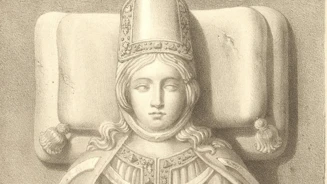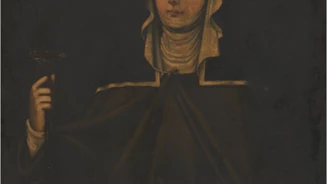House of Queens – For centuries, Sintra was run by (great) women
08 Mar 2024
When we think of the management of a kingdom, we tend to think of kings. There is a general perception – widely rehearsed across various media – that it was the king who took care of the entire territory, including all political, legal, administrative, and financial tasks, using only his most trusted men to help him with these arduous tasks. The queen was merely a (quasi) decorative figure, responsible exclusively for ensuring the succession.
But this does not correspond to historical fact. In reality, there were lands in Portugal that were under the command not of the king, but of the queen. The House of Queens – the name given to all the property donated by the monarchs to their consorts – brought these women not only responsibilities, but also a certain level of independence, with the queens relying on income from these lands in the form of rents, taxes, goods in kind, and so on.
Such endowments began very early in Portugal's history. As we can read on the website of the National Archive of Torre do Tombo: "Queen Mafalda, wife of King Afonso Henriques, through her will, reserved certain toll rights for the maintenance of a hostel she had established in Canaveses. This suggests that the land in question belonged to her, although there are still doubts as to whether the references to Mafalda refer to the wife of Afonso Henriques or the daughter of King Sancho I."

Sintra became part of the House of Queens in the 13th century, with documents stating that Queen Mécia Lopes de Haro, wife of King Sancho II, was the owner of Sintra Castle (circa 1240). In 1281, the year he married Isabella of Aragon, the 'Holy Queen', King Dinis ordered the 'Moorish freemen' of Colares to maintain the Palace of Sintra, the old almedinas of the Castle and the terraces of the tower. Six years later, in 1287, the king donated the town of Sintra to Queen Isabel. The queen was thus given Abrantes, Óbidos, Porto de Mós, Vila Viçosa, Monforte, Ourém, Feira, Gaia, Lamoso, Nóbrega, Santo Estêvão de Chaves, Monforte do Rio Livre, Portel, Montalegre and Sintra, "as well as cash rents and the towns of Leiria and Arruda (1300), Torres Novas (1304) and Atouguia (1307). She also owned the crown lands of Gondomar, Rebordões and Codões, as well as a farm in Torres Vedras and the Atalaia marshland," we read on the same website.
The House of Queens encompassed not only the lands and their rents, but also a whole list of people, from noble ladies and officials to servants and slaves. All such endowments remained the property of the crown, but the queen was the beneficiary of their income and financial gains, which enabled her to maintain her House. For example, in the list of courtiers in the town of Almeirim in 1545, there were 640 people from the House of Queen Catherine of Austria.

The endowment of property to queens became a common practice over the centuries. According to historical documents that have survived to the present day, Sintra (and many other towns) have fallen under the management of several queens. The first was Queen Mécia Lopes de Haro, wife of King Sancho II, who received Sintra Castle as a wedding present. This was followed by Isabel of Aragon (wife of King Dinis), Beatriz (wife of King Afonso IV), Leonor Teles (wife of King Fernando), Philippa of Lancaster (wife of King João I – it was during her reign that the queen's land holdings stabilised and that the king defined his powers over these territories), Leonor of Aragon (wife of King Duarte), Isabel of Coimbra (wife of King Afonso V), Leonor of Lancaster (wife of King João II), Catherine of Austria (wife of King João III), Luísa de Gusmão (wife of King João IV), Maria Francisca Isabel of Savoy (wife of King Afonso VI and King Pedro II), Maria Sophia of Neuburg (wife of King Pedro II), Maria Anna of Austria (wife of King João V), Mariana Vitoria of Bourbon (wife of King José), Maria I and Carlota Joaquina (wife of King João VI).
The House of Queens was administered independently until 1769. The following year, during the reign of Queen Maria I and by decision of the Marquis of Pombal, the House's income was managed by the Royal Treasury, though expenditure continued to be authorised by the Queen.
The establishment of the liberal regime in Portugal brought major changes to the functioning of the monarchy, with the Court of the Council of the Royal Household and State of the Queens and its dependencies abolished in 1833.
